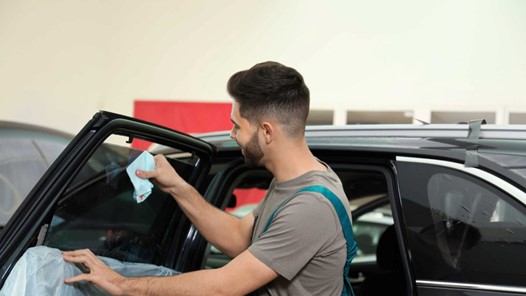Window tinting has evolved into a crucial aspect of vehicle customization, offering both aesthetic enhancement and functional benefits. Among the array of tinting options available, carbon and ceramic tints emerge as premium choices, renowned for their superior performance and durability. In this detailed exploration, we’ll dissect the intricacies of carbon and ceramic tints, aiding you in making an informed decision regarding the best choice for your vehicle.
Understanding Carbon Tint:
Carbon window tinting stands distinguished for its remarkable heat rejection capabilities and sleek visual appeal. Composed of carbon particles integrated within the tint film, this variant efficiently absorbs and dissipates heat, ensuring a consistently cool interior even amidst scorching weather conditions. Moreover, carbon tint boasts exceptional UV protection, shielding both passengers and the vehicle’s interior from the detrimental effects of solar radiation. Furthermore, its advanced formulation guarantees enhanced optical clarity, minimizing distortion and ensuring clear visibility both day and night.
Exploring Ceramic Tint:
Ceramic window tinting represents the epitome of tinting technology, offering unparalleled performance and longevity. Unlike conventional tints utilizing metallic or dyed particles, ceramic tints harness advanced ceramic nanoparticles. This unique composition endows ceramic tint with superior heat rejection capabilities without compromising visibility or impeding electronic signals. Additionally, ceramic tint delivers exemplary UV protection, safeguarding the vehicle’s interior over prolonged periods. Furthermore, its exceptional resistance to fading, bubbling, and discoloration ensures sustained efficacy and aesthetic appeal.
Comparing Performance:
In terms of performance, both carbon and ceramic tints surpass traditional tinting options by a considerable margin. However, ceramic tint typically outperforms carbon tint in terms of heat rejection and UV protection. With the ability to block up to 99% of UV rays and reject a higher percentage of solar heat, ceramic tint proves particularly adept in hot climates or regions with intense sunlight exposure. Conversely, while carbon tint offers commendable heat rejection and UV protection, it may not match the performance standards set by ceramic tint.
Considering Aesthetics:
Aesthetic preferences play a pivotal role in tint selection, and both carbon and ceramic tints offer distinct visual characteristics. Carbon tint exudes a slightly darker and matte finish, evoking an understated elegance that appeals to many car enthusiasts. On the contrary, ceramic tint radiates optical clarity and color stability, ensuring a pristine appearance that endures the test of time.
Making the Decision:
The choice between carbon and ceramic tint hinges on individual preferences, budget constraints, and performance requisites. If prioritizing superior heat rejection, UV protection, and long-term durability, ceramic tint emerges as the quintessential option. Conversely, for those seeking a cost-effective solution without compromising on performance and aesthetics, carbon tint presents an attractive alternative. Irrespective of the choice made, investing in high-quality window tinting promises enhanced comfort, privacy, and value for your vehicle, reaffirming its status as a prudent investment in both the present and the future.
When it comes to enhancing your vehicle’s comfort and style, carbon and ceramic tints stand out. Explore their benefits and make the right choice for your vehicle. Elevate your tinting experience with Turbo Tint Orlando, where precision meets perfection. Contact us today to schedule your appointment and experience the difference!







